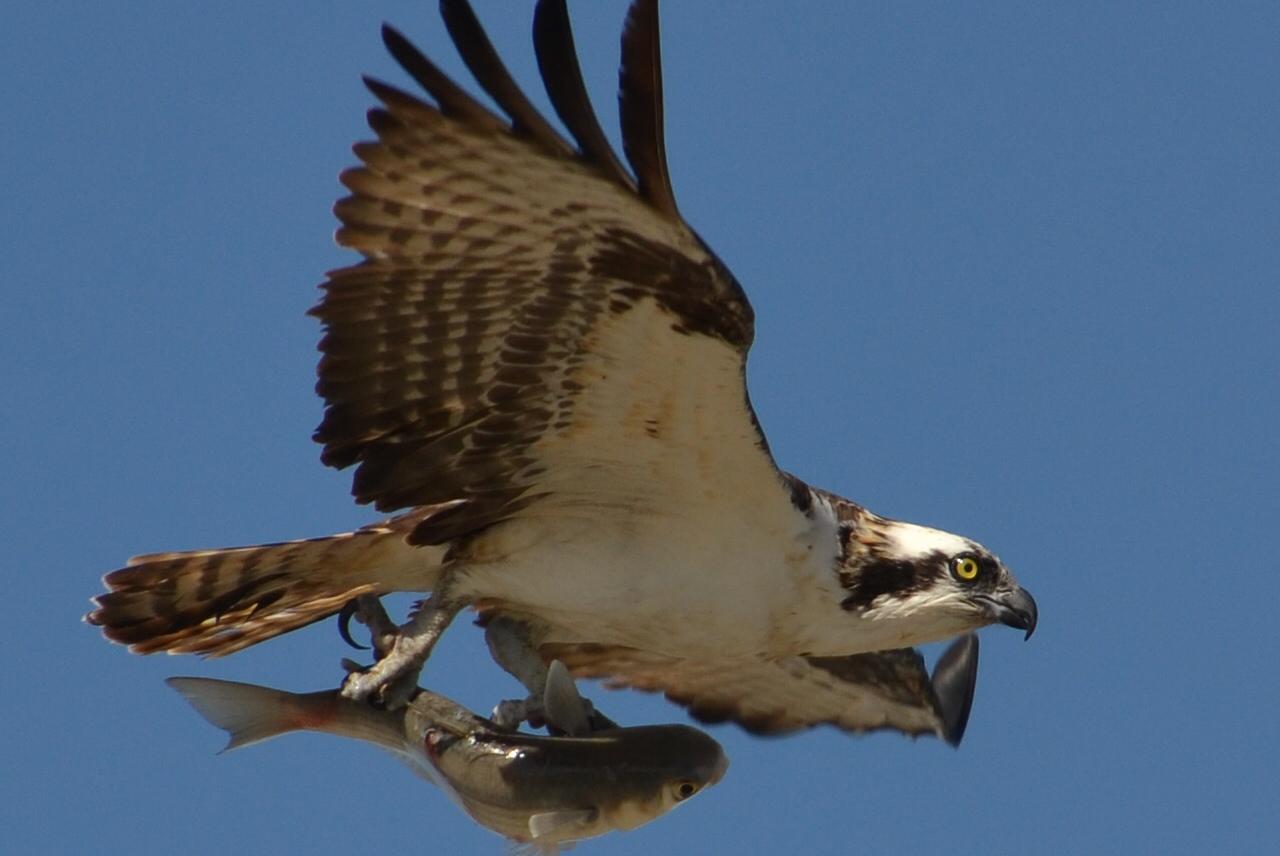
An osprey soars with a fish in its talons. Research by the U.S. Geological Survey says osprey are among the species harmed by contaminants in the lower Columbia River.
Matt Shiffler Photography/Flickr
The U.S. Geological Survey has found high levels of toxic substances in the Columbia River everywhere from sediments to resident fish to osprey eggs.
The results of a six-year study of the Columbia River downstream from the Bonneville Dam were announced on Tuesday.
USGS hydrologist Steven Sobieszczyk says the contaminants –- which come largely from household products -– hadn’t been effectively tested for in the past.
“In a lot of cases, there’s not even thresholds set for safe and unsafe because we’ve never looked for them before,” Sobieszczyk said.
Elena Nilsen is a research chemist and team lead at USGS in Portland.
She says largescale sucker, the fish species they studied, show abnormalities including negative sperm health that makes it harder for them to reproduce.
With a study involving 13 principal investigators over those years, Nilsen points to confirmed links between household products and effects in the ecosystem of the Columbia River.
“A lot of these things come through the pathways of the wastewater treatment plant into the river – but the ultimate source was usually us,” Nilsen said.
Sara Thompson is public information officer for Columbia River Inter-Tribal Fish Commission. Although regional tribes don’t rely on largescale sucker as they do on salmon and steelhead as subsistence fisheries, she says the new USGS study raises larger water quality concerns.
“Water quality often goes overlooked and ignored because it’s not tangible. You can’t see it,” Thompson said. “We can see fish populations decrease in the Columbia River system and the Willamette System but we can’t see these toxics. We have to make water quality standards a priority in Washington, Oregon and Idaho.”
If resident sucker fish are consumed regularly, health risks, including cancer, could increase.
Nilsen says immigrant communities may be most affected; they eat largescale sucker fish more than other groups because the fish can be caught locally and provide a reliable food source.
The USGS study measured toxics in river sediments, aquatic insects, sucker, and then osprey eggs.
Nilsen says the findings show bioaccumulation -– in which higher levels of toxins were found the higher up the food chain you looked.
In addition, contaminant levels were higher the further downstream the government scientists looked, as the human impacts accumulated.
The three sites studied were near Columbia City, Ore. and Skamania and Longview on the Washington side of the lower Columbia River.
Nilsen says the toxic sources observed are often as innocuous as furniture, non-biodegradable cleaning products and even home electronics. Through consumption and cleaning those toxins can make their way into regional waterways.
“It’s made me just try to be more mindful of the effects that I in my own home can have –- and thinking about everything we’re putting down the drains,” Nilsen said.
USGS has provided this data to health authorities in Oregon and Washington, which are responsible for issuing consumption advisories.
The two states issued related advisories regarding resident fish below the Bonneville Dam last fall.
VIDEO produced by the USGS to explain its research into contamination in the Columbia River:
